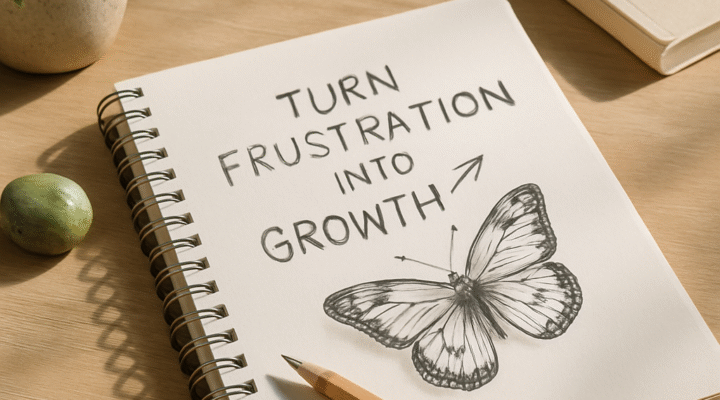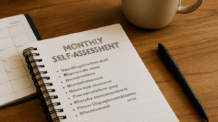
Frustration is a part of life. It shows up when things don’t go as planned, when goals feel out of reach, or when results take longer than expected. But instead of seeing frustration as a dead-end, you can use it as fuel for growth.
When approached with awareness, frustration becomes a signal—a signpost pointing to something deeper: an unmet need, a limiting belief, or a gap in skills. In this guide, you’ll learn how to transform that emotional energy into reflection, learning, and forward momentum.
1. Acknowledge the Frustration Without Judgment
The first step is not to suppress it, but to recognize it.
- Say to yourself: “I’m feeling frustrated—and that’s okay.”
- Avoid labeling the emotion as wrong or weak
- Emotions are information, not flaws
- Giving it a name begins to reduce its power
2. Pause Before Reacting
Frustration often sparks impulsive reactions—quitting, blaming, or retreating.
- Take a breath before responding
- Step away if needed to cool down
- Give yourself space to observe, not just react
- Ask: “What’s really going on here?”
This pause creates the opportunity for growth.
3. Identify the Source of the Frustration
Frustration usually comes from one of the following:
- Expectations not being met
- Lack of progress despite effort
- Comparison with others
- Unclear goals or priorities
- Feeling out of control
Naming the cause helps you understand what needs to shift—internally or externally.
4. Shift From “Why Me?” to “What Can I Learn?”
This single mindset shift changes everything.
- Instead of: “Why is this happening to me?”
- Try: “What is this teaching me?”
- Ask reflective questions:
- What did I expect, and why?
- What can I do differently next time?
- Is there a skill I need to develop?
Learning turns frustration into feedback—not failure.
5. Adjust Expectations Without Lowering Standards
Sometimes frustration is a sign your expectations were too rigid or unrealistic.
- Be flexible, not passive
- Focus on effort and consistency, not perfection or speed
- Remember that growth is not always linear
- Set realistic timelines that allow space for trial and error
Adjusting your expectations makes progress more sustainable.
6. Break the Problem Into Smaller Parts
Frustration often stems from feeling overwhelmed.
- Break down your challenge into smaller, manageable steps
- Ask: “What’s the very next thing I can do?”
- Create micro-goals to build momentum
- Small wins restore confidence and reduce stress
7. Talk About It With Someone You Trust
Sharing your experience helps process it more clearly.
- Choose someone who will listen without judgment
- Verbalizing your frustration often reveals hidden insights
- Others may offer new perspectives or helpful feedback
- Don’t carry the emotional load alone
8. Reconnect With Your “Why”
Frustration feels heavier when we forget why we started.
- Remind yourself of your long-term vision or goal
- Visualize how it will feel to overcome this moment
- Purpose gives discomfort a deeper meaning
- Reconnecting with your “why” renews emotional resilience
9. Track Lessons Learned
Turn each frustration into a learning record.
- Use a journal to write:
- What happened
- How you felt
- What you learned
- What you’ll do next time
- Reviewing this over time shows how much you’ve grown
- Your frustrations become a personal growth roadmap
10. Celebrate the Act of Trying
Trying and struggling is better than not trying at all.
- Acknowledge your effort, even if the outcome wasn’t perfect
- Growth comes from showing up, learning, adjusting, and trying again
- The ability to transform frustration is a skill—and you’re building it
Growth Often Disguises Itself as Frustration
What feels like a setback is often just a lesson in disguise. The more you practice meeting frustration with awareness and intention, the more you develop emotional strength, clarity, and confidence.
Remember: frustration doesn’t mean failure. It means you care, you’re growing, and you’re being stretched toward something greater.



Deixe um comentário